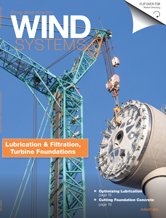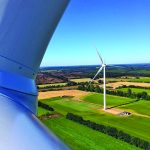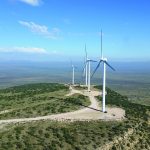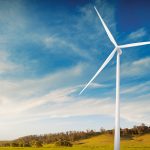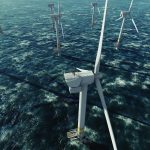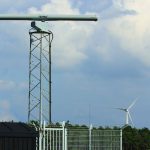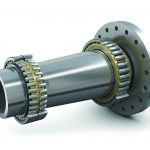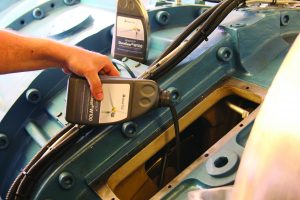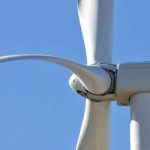American wind power is on track to supply 20 percent of the country’s electricity by 2030, a goal set in the Department of Energy’s Wind Vision report released early last year. Following a near-record year of wind installments in 2015, activity in the U.S. continued at pace in the first quarter. In addition to 520 MW of new capacity, wind developers are constructing more than 10,000 MW of new capacity with a further 5,000 MW likely to start construction soon.
With new long-term, predictable policy certainty in place, the U.S. wind-energy industry is expected to continue this growth trend for the foreseeable future. Continuing cost declines, technological advances, and new customers recognizing the value of wind energy also will help keep this homegrown industry firmly on track to fulfill 20 percent of America’s electric needs.
Nonetheless, lingering issues like transmission and policy still need to be addressed. It’s necessary to allow the industry to continue growing into one of the leading sources of American electricity, helping to garner new investment, create jobs, and keep the lights on in homes and businesses throughout the country.
Strong Growth
Over the last five years, it’s become clear that wind power is often the preferred source of new electricity. In 2015, it was the largest source of new electric-generating capacity, with more wind power coming online than solar or natural gas, accounting for 41 percent of all new generating capacity. Overall, wind is supplying roughly 5 percent of U.S. electricity, enough to power 20 million American homes.
 At the state level, progress is even more impressive. Iowa now leads the nation, generating more than 31 percent of its electricity using wind. A dozen states now rely on it to supply at least 10 percent of their electricity. That includes Texas, which is particularly noteworthy considering the state is America’s largest energy user. The industry is also expanding to new parts of the country. In 2015, Connecticut became the 40th state to host a utility-scale wind project, while earlier this year Guam became the second territory to build a wind project. Activity in early 2016, catalyzed by the five-year extension of the production Tax Credit, indicates the industry will continue to grow rapidly. Just in the first three months of the year more than 2,000 MW of wind projects commenced construction with an additional 1,500 MW announced in late stages of development. In total, more than 15,000 MW of wind turbines are being erected now or in the near future.
At the state level, progress is even more impressive. Iowa now leads the nation, generating more than 31 percent of its electricity using wind. A dozen states now rely on it to supply at least 10 percent of their electricity. That includes Texas, which is particularly noteworthy considering the state is America’s largest energy user. The industry is also expanding to new parts of the country. In 2015, Connecticut became the 40th state to host a utility-scale wind project, while earlier this year Guam became the second territory to build a wind project. Activity in early 2016, catalyzed by the five-year extension of the production Tax Credit, indicates the industry will continue to grow rapidly. Just in the first three months of the year more than 2,000 MW of wind projects commenced construction with an additional 1,500 MW announced in late stages of development. In total, more than 15,000 MW of wind turbines are being erected now or in the near future.
Add to this total more than 660 MW of power-purchase agreements announced by utilities and companies like 3M and Salesforce, and it is easy to get a sense of the momentum building throughout the industry.
Cost Declines Drive Progress
Much of this growth is possible because wind power is increasingly cost-competitive with other energy sources. Today, the price of wind is 66 percent less than it was just six years ago. In many parts of the country, it’s now the cheapest source of new electric generating capacity, as noted by groups like Politifact and Wall Street investment firm Lazard Inc.
 Technological advances and improved domestic manufacturing are largely responsible for wind energy’s falling costs. Design improvements allow wind turbines to access stronger, steadier winds, increasing their efficiency and economic value in more places. For example, later this year North Carolina will become the 41st state with a utility-scale wind project, while the country’s first offshore wind farm off the coast of Rhode Island is set to begin operations later this year. Just a few short years ago, technological restraints meant these efforts wouldn’t have been financially viable.
Technological advances and improved domestic manufacturing are largely responsible for wind energy’s falling costs. Design improvements allow wind turbines to access stronger, steadier winds, increasing their efficiency and economic value in more places. For example, later this year North Carolina will become the 41st state with a utility-scale wind project, while the country’s first offshore wind farm off the coast of Rhode Island is set to begin operations later this year. Just a few short years ago, technological restraints meant these efforts wouldn’t have been financially viable.
The long-term policy stability provided by December’s bipartisan extension of the Production Tax Credit has also made much of this progress possible, creating a business environment primed for success and unleashing American innovation.
Wind Power Growth Equals Job Growth
All of this growth means plenty of employment opportunity. Wind-energy jobs grew by 20 percent during 2015. At the start of this year, a record-high 88,000 Americans across all 50 states worked in the U.S. wind industry, including 21,000 manufacturing jobs at more than 500 factories.
With more than 48,000 wind turbines operating across the U.S., that also creates a strong need for people who can operate and maintain them. The wind-turbine technician is the country’s fastest growing job, according to the U.S. Bureau of Labor Statistics. With the industry on track to double over the next five years and double again by 2030, the wind-turbine technician will continue to be an impressive source of job opportunity in rural parts of the country.
New Customers Drive Demand
Wind power’s falling cost and increasing long-term value has caught the attention of non-traditional buyers like Fortune 500 companies, cities, and universities, which have become some of wind energy’s biggest new customers. These groups particularly like the price stability wind offers because it facilitates long-term and strategic planning. So not only does buying wind power help them achieve internal sustainability goals, it’s also good for their bottom lines.
 There were numerous high profile examples of this trend in 2015. Procter & Gamble bought enough wind power to produce all of its home care goods, like Tide and Mr. Clean, while General Motors purchased enough to build more than 120,000 trucks every year at one of its Texas factories. Meanwhile, Google and Amazon chose wind to power new data centers, and Washington, D.C., purchased enough wind to power more than one-third of the city government’s operations.
There were numerous high profile examples of this trend in 2015. Procter & Gamble bought enough wind power to produce all of its home care goods, like Tide and Mr. Clean, while General Motors purchased enough to build more than 120,000 trucks every year at one of its Texas factories. Meanwhile, Google and Amazon chose wind to power new data centers, and Washington, D.C., purchased enough wind to power more than one-third of the city government’s operations.
The numbers show these examples aren’t anecdotal. In 2015, more than half of the megawatts contracted through power-purchase agreements were signed by non-utility buyers. That’s more than double the amount in 2014, and far more than 2013, where non-utility buyers signed a mere 5 percent of such agreements. Already this year, non-utility buyers have entered into power-purchase agreements for more than 240 MW of wind power, a number that will only grow.
The American Public Loves Wind Power
As an affordable, clean source of electricity that drives job growth, it’s no surprise that support among the general public for wind energy is at an all-time high. A recently released poll from Lazard finds 91 percent of likely voters support growing wind power.
Importantly, Lazard found these sentiments cross party lines. Today, only 18 percent of self-described conservatives think transitioning toward a clean-energy economy isn’t important. In 2012, that number was 46 percent. A majority of conservatives also think this transition is an issue of “most concern,” up 17 points from four years ago, while nearly 60 percent support legislation that would grow renewable energy.
As George Bilicic, vice chairman and global head of Lazard’s power, energy, and infrastructure group, explained, “Despite the polarized climate in Washington, voters’ support for cleaner energy policies increasingly transcends political affiliation.”
Moving Forward
However, to keep this American success story moving forward, there are still obstacles that need to be overcome.
One of them concerns transmission. We need to build the necessary infrastructure to transport wind-generated electricity from the best resource areas to the towns and cities where electricity demand is highest. In the past, we built rail lines to transport coal and pipelines to transport natural gas. Now it’s time to update the grid for 21st century needs.
Studies show this doesn’t need to be an expensive endeavor, and it can actually result in a net benefit for consumers. A recent report from the Brattle group found $47 billion in yearly electric bill savings for consumers from improved transmission planning. Other studies back this up. The Southwest Power Pool, a grid manager in 14 states, reports that transmission upgrades would save $800 for each of its customers over the next four decades. Likewise, the Midcontinent Independent System Operator, which manages the grid in another 15 states, found similar improvements could save each person it serves $1,000 in the coming years.
Experts estimate the U.S. wind industry will add about 9,000 MW per year through 2020, meaning strong growth will continue for the foreseeable future. Transmission expansion will be critical in ensuring this success.
The U.S. wind industry will continue working with its partners and champions to ensure that we stay on track to provide clean, affordable wind power for Americans across the country.
















